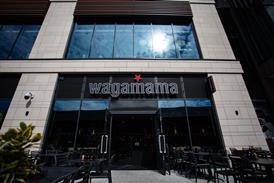The theory of a happy workforce being a productive one is fairly simple, but achieving this goal is far from straightforward. Here Lord Mark Price, the former managing director of Waitrose who announced he was resigning from his role as trade minister earlier this month , shares his thoughts on keeping employees engaged.
If you accept the straightforward logic that engaged employees drive improved commercial performance through superior customer service and productivity, which in turn leads to great profitability, you will inevitably be drawn to how you measure happiness and employee engagement. Businesses are very good at measuring the profit part of the equation, together with measures that directly drive that profitability, such as items produced per person or customers served per hour, but are perhaps less good at monitoring those things that drive employee engagement. And even if they do, one wonders if they rank at the top of the operational performance and profit statistics monitored.
So where to start? To what extent is measuring employee happiness an art or a science? From the outset of the John Lewis Partnership, the measurement of happiness was an art. An art in which, from the first day of joining, managers and managed are trained.
There were and are no short cuts.
Criticism evokes truth
Let me explain. There are numerous methods used by the partnership to obtain qualitative feedback, which, over almost a century, have led to the formation of a strong culture. Culture to me is best described as the sediment of past transactions, and over almost 100 years, a lot of sediment has built up. So how does it work?
Firstly, there are managers in the business who are independent and critical of management. This critical side of the business reports directly to the partnership’s chairman and ensures that managers are abiding by the constitution and operating in the interests of partners. The critical management is embedded in all areas and at all levels to collect and share information on a continual basis. The role of the critical managers is to be impartial and speak ‘truth to power’. The responsibility of management is to openly listen to and accept the feedback and, as appropriate, act upon it.
Next there is the journalism. Weekly magazines are published for the whole partnership as well as individual business units. These are not run and managed by the management but by the critical side so as to be impartial and open. Remarkably, the magazines welcome anonymous letters, often critical of management, which are an instant barometer of the mood of the organisation. A wise management acts upon them.
Then there is the partnership’s democracy. In Waitrose, it is split over three levels: a branch council, then a regional council and finally a Waitrose council.
There is then also a partnership council. For each council, partners run for election and, through the successful candidates’ terms of office, they hold management to account and give feedback on how the business could be better – an invaluable source of information on partner engagement and happiness. And to cap it all, five members of the partnership board are elected to post by their colleagues. Here, then, each month, is the chance for the most senior managers to hear how partners are feeling.
Understanding key measures
As you can see, through all these channels there is no shortage of information, on a personal or business level, about the state of the business and partner happiness. This is the art, and it takes time, particularly for new managers, to understand and embrace. So, to balance this, a number of quantitative measures are very helpful.
To begin there are a few measures that are relatively easy to collect. Four are key: staff turnover, sickness absence, internal promotions and longevity. Averages are often the preserve of the ill-informed and lazy, as while there is some advantage to understanding these figures on a company-wide basis, the real benefit comes in being able to break them down by department or manager. You see, employees will normally leave a manager who doesn’t give them what they need, no matter how good the business or brand. Good line management is key to securing engagement. Enumerating the four statistics above is a good measure of how well line management is doing. I would wager that there will be a high correlation between the best commercial performing areas of a business and a manager with low staff turnover, low sickness absence and the greatest longevity of staff. I would further wager that in those departments, staff feel more valued and engaged. I wonder how many managers, though, have those three things at the top of their objective list, or the lead measure for any incentive payments?
It also pays to have a formal exit survey/interview to find out exactly what is driving the employee to leave. The information captured can then be circulated and used to help develop retention plans, reducing the considerable cost of recruitment, training and bringing new recruits to be optimally productive.
Surveys on a consistent basis
Lastly, an employee survey, whether annual or more frequent, will then add colour to the employment statistics. To my mind, the key to such an approach is not to use it to beat line management, but instead to inform and guide on how to improve staff turnover, sickness absence and longevity, etc, over time. Surveys are best, therefore, when consistent over a number of years, so as to monitor progress and build around the six areas crucial to achieve engagement, namely: reward and recognition, information, empowerment, wellbeing, worthwhile work and satisfaction. Within each of these areas, each business will want to choose questions that are appropriate for them, but you could begin with a 10-question survey as straightforward as:
1 Do you feel appropriately rewarded for your work?
2 Do you feel recognised when you do something well?
3 Do you feel as though you have enough information to do your job well?
4 Do you feel empowered to make decisions?
5 Do you feel trusted to make decisions?
6 Do you feel the business cares for your wellbeing?
7 Do you feel you do something worthwhile?
8 Do you feel you are treated with respect?
9 Do you feel that you are being developed?
10 Do you feel satisfied in your work?
This sort of survey, scored from 1 to 10, on a low to high basis, and coupled with employee comments, will provide the basis for building programmes for increasing employee happiness and engagement. You can visit engaging.works.com to see how you or your company score.
■ Lord Price is the former managing director at Waitrose, deputy chairman of the John Lewis Partnership. He stepped down as Minister of State for Trade and Investment.
■ This is an extract from Fairness for All, published by Stour Publishing.





































